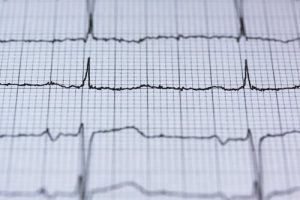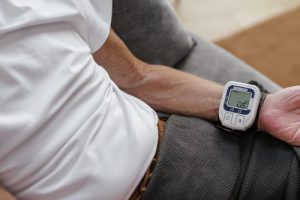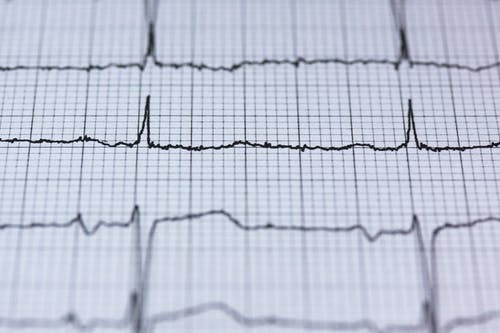Table of Contents
How to calculate your Pulse Correctly?
Heart rate is one of the basic parameters that affect the effectiveness of a workout. Without taking it into account, you can do exercises very intensively and for a long time, achieving only insignificant results.
And if you have a specific goal, weight loss or gaining muscle mass, then maintaining the optimal heart rate during training significantly improves the results.
Only those who run professionally pay attention to such an important point. However, before proceeding to training, you just need to find out what potential your heart muscle has, which loads are normal for it, and what are unacceptable.
Pulse Zones – How to Calculate your Pulse
Each age group has its own, so-called, heart rate zones. However, if your heart rate is slightly higher than the suggested limits, this is not a reason for strong feelings.
But at the same time, you must definitely pay attention if your heart rate is significantly higher than these parameters.

The best way to bring it back to normal is with the right cardio loads. The heart is a muscle that contracts and pumps blood throughout our body. And since this is a muscle, then it can be trained like any other.
This is where the turn of cardio comes in. If you regularly run, then after a while your heart rate will begin to decrease.
Professional runners, who often run marathons, have a completely calm heart rate of about 37 beats per minute. To better understand this value, it is enough to remember that the average norm for an ordinary person is 60-100 strokes, and for athletes with good physical fitness – about 40-60.
As for the normal heart rate indicators in different age categories, you can familiarize yourself with them below:
| Newborns from 0 to 3 months | 100-150 beats per minute; |
| Infants from 3 to 6 months | 90-120 beats per minute; |
| Infants from 6 to 12 months | 80-120 beats per minute; |
| Children from 1 to 10 years old | 70-130 beats per minute; |
| Children over 10 years old and adults, including the elderly | 60–100 beats per minute; |
| Professional athletes | 40-60 beats per minute. |
Each human heart has a certain reserve for life, which practically none of us fully uses.
There are quite clear symptoms of heart strain – chest pain and severe shortness of breath. If you feel something like this, you need to slightly reduce the load.
Our heart and running – How to Calculate your Pulse?
What processes occur with our heart muscle and body during jogging?
First, the heart rate begins to level out and fall – the body tries to maintain balance. If the heart works well enough, then the rest of the organs will remain in order.
If even at rest your pulse is high, then there is too much cholesterol in the blood, and the vessels are not elastic enough.
During jogging, your blood flow increases, the pressure in the vessels rises, and your body temperature also rises.
This pressure will enable the body to flush some residues of unprocessed fat and other breakdown products from the arteries.
If you increase the load a little more, then the body will take excess cholesterol from the blood as “fuel” for energy production.

After some time of such loads, your arteries and blood will gradually clear of all unnecessary, become more elastic.
Their gaps will become wider, and the body will get used to such loads and the need to pump blood so often will disappear, which means that the pulse rate will decrease. By continuing to train further, you will enable your heart to enlarge.
In addition, our body has a great many capillaries that penetrate all corners of the body. They are also released and cleansed, more and more free pathways for blood flow appear, which means that the flow of oxygen and necessary elements to all other organs significantly increases.
In other words, your whole body seems to come to life, awakens like trees after winter…
Again, from statistics, a person who, due to some circumstances, leads a sedentary lifestyle, the cardiovascular system is about 20 times weaker than that of someone who regularly conducts cardio loads.
Purified blood will also affect the overall tone. The number of erythrocytes in the blood will increase, they, in turn, will actively move hemoglobin through the vessels, and it will begin to actively produce glycogen.
This very glycogen, so to speak, is the highest quality fuel for the body. How the body can produce it directly affects the amount of oxygen that the blood carries through the body.
If it is not enough, then “oxygen starvation” sets in, and the body begins to deplete very quickly, if the physical fitness of a person is not enough.

What you need to determine your maximum heart rate? How to Calculate your Pulse?
Very simple calculations here: You simply take 220 and subtract your age from it.
| HR max = 220 – age |
On the Internet, you can also find a lot of calculator resources that will calculate your heart rate zones.
Excess body fat, and therefore kilograms, begin to go away at the moment when the pulse goes to 60% -70% of the maximum frequency.
The loads in this zone are quite bearable, classes bring tone, do not exhaust. Most of the calories that the body expends in this heart rate zone comes from fat stores.
The so-called aerobic heart rate zone works when the heart rate is 70% -80% of the maximum. Here the lungs are activated, this is due to the fact that the body begins to intensively consume oxygen.
It is against this background that the growth of the heart muscle begins. At the same time, more calories are burned, but if in the previous heart rate zone about 85% of them were from fat reserves, then here only 50%.
How to Calculate your Pulse?
The most convenient way to use is a heart rate monitor, a small device that automatically calculates your current heart rate.
It is worn on the wrist, and the sensor itself is worn on the chest. Therefore, to determine the pulse, you just need to look at the display.
Also, the pulse can be measured on any cardiovascular equipment at any fitness club. It is enough to firmly grip the handles with the heart rate monitor for a certain time until the simulator shows your current heart rate readings.
Get the most out of your workouts and the desired result will not be long in coming
